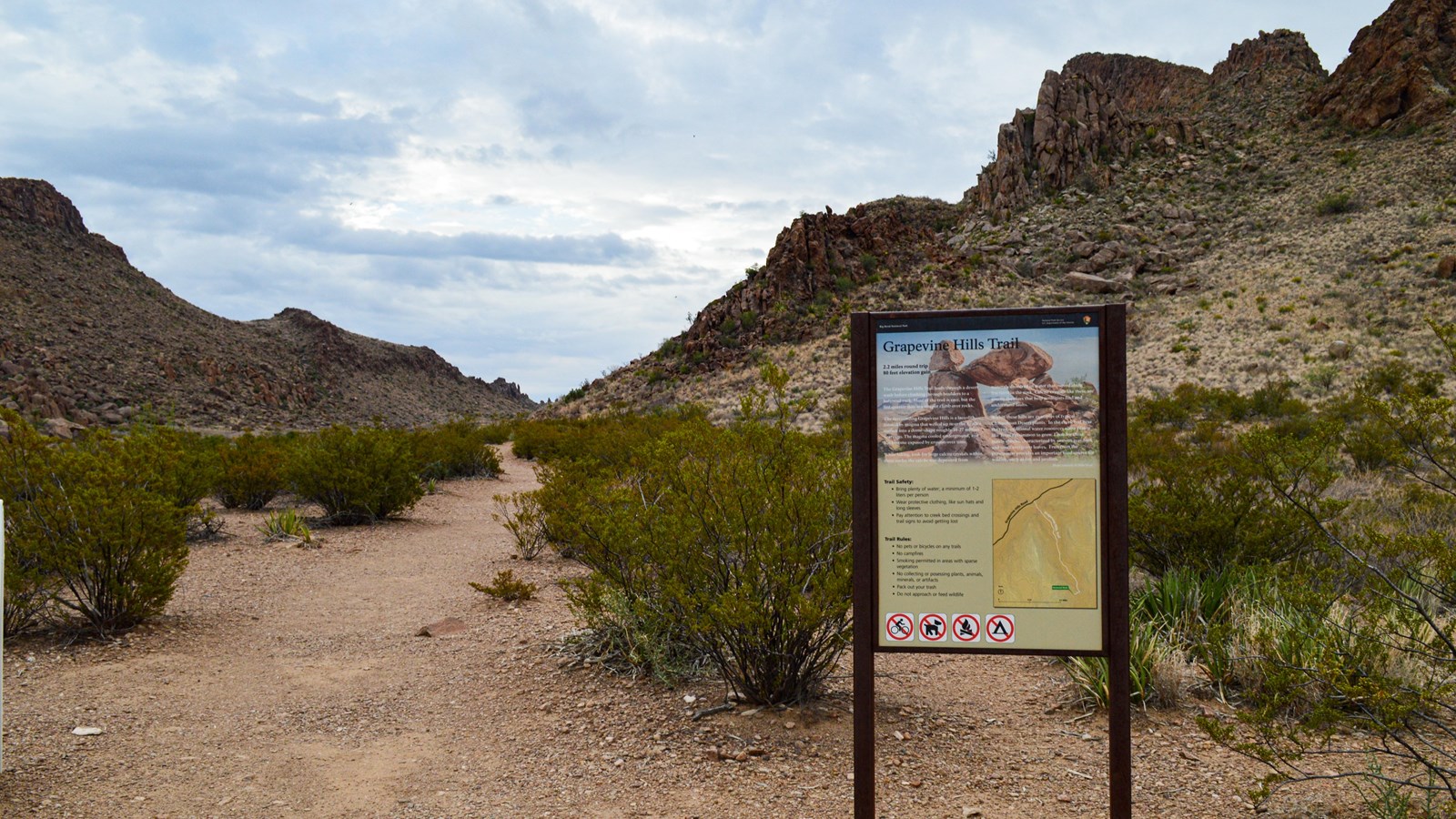Last updated: January 7, 2022
Place
Grapevine Hills Trail

NPS/C. Negele
Information Kiosk/Bulletin Board, Parking - Auto, Scenic View/Photo Spot, Trailhead
Trail Information
Roundtrip Distance: 2.2 miles (3.5 km)
Elevation change: 80 feet (24 m)
Average hiking time: 1-2 hours
The Grapevine Hills Road is very rough and REQUIRES a sturdy, high-clearance vehicle. Do NOT attempt to reach this trail with a passenger car, minivan, or RV.
Dogs and other pets are not allowed on any trails in the park.
The trail leads to a group of balanced rocks in the heart of Grapevine Hills. This is a great hike for families with kids. nitially, the trail follows a gravel wash, then climbs steeply for the last quarter mile into the boulders. The last section requires crossting steep, rough bedrock, and negotiating a challenging landscape of boulders. Stay on the trail, and watch carefully for the directional arrows that point the way to the balanced rock. Use extreme caution, especially coming back down. Grapevine Hills is an exposed laccolith, with many giant rounded boulders. These boulders are tempting to climb, but it is important to watch out for snakes who like to hang out in their protective shade.
Accessibility
The first 0.75 miles (1.2 km) of the trail is relatively easy, dipping in and out of a sandy wash, with a gradual rise in elevation. The last 0.25 mile (0.4 km) involves a climb up a steep rocky slope. Please take extra caution on the climb back down, as the rocks are covered with a loose layer of sand and gravel that makes for a slippery descent. Park rangers regularly respond to foot/leg/ankle injuries on this trail.
There is NO shade anywhere along this desert trail.
A dirt parking lot at the trailhead provides parking for about ten vehicles.
Hike Smart
Bring plenty of water!
Carry 1 liter of water per person per hour that you plan to hike. The importance of carrying enough water in this hot, dry climate cannot be overstated!
Eat
Your body needs food for energy and salts and electrolytes to replace what it's losing from perspiration. The dry climate at Big Bend means that sweat often evaporates almost instantly; your body is likely losing lots of moisture and salts without you even realizing it. Eat plenty of salty snacks to keep your body's salt-to-water ratio in balance.
Sun protection
Carry sunscreen and use it liberally. Hats are also strongly recommended. It may seem strange to wear long-sleeved shirts and pants in hot weather, but many hikers choose lightweight, breathable clothing which covers their arms and legs to protect themselves from the sun.
Don't leave people behind
If you're hiking in a group, make sure the person in the back always has someone to help.
Be aware of wildlife
Keep an eye out for snakes, and remember to maintain a safe distance between yourself and all wildlife. Animals in the park are wild and should never be approached, harassed, or fed.
Don't stack rocks
Cairns are stacks of rocks which are sometimes used to mark trails in areas where they are hard to follow. Randomly stacked rocks can lure hikers off the correct trail.
